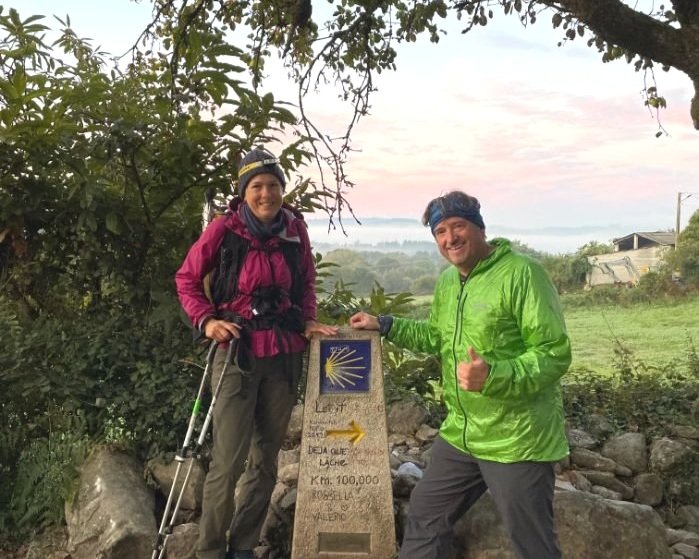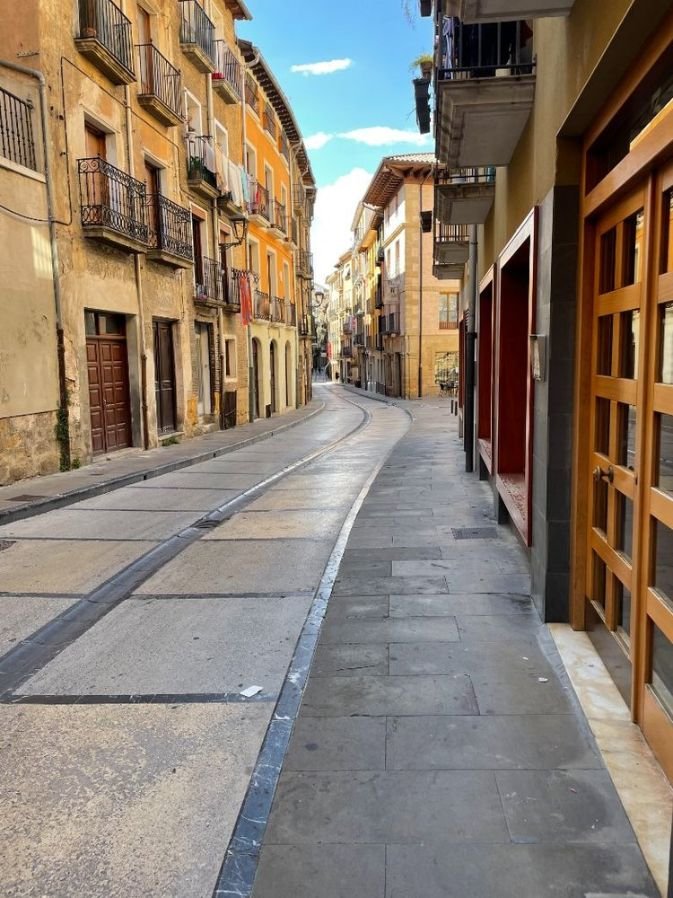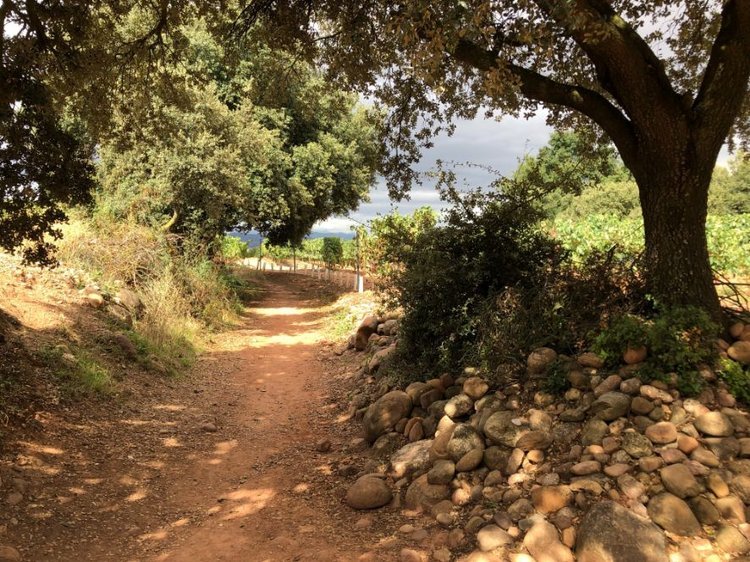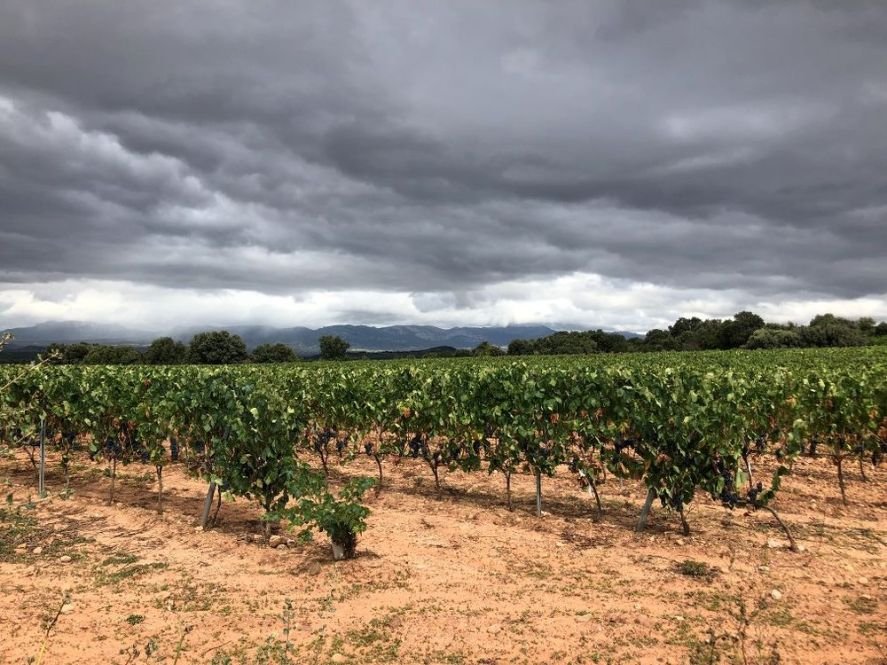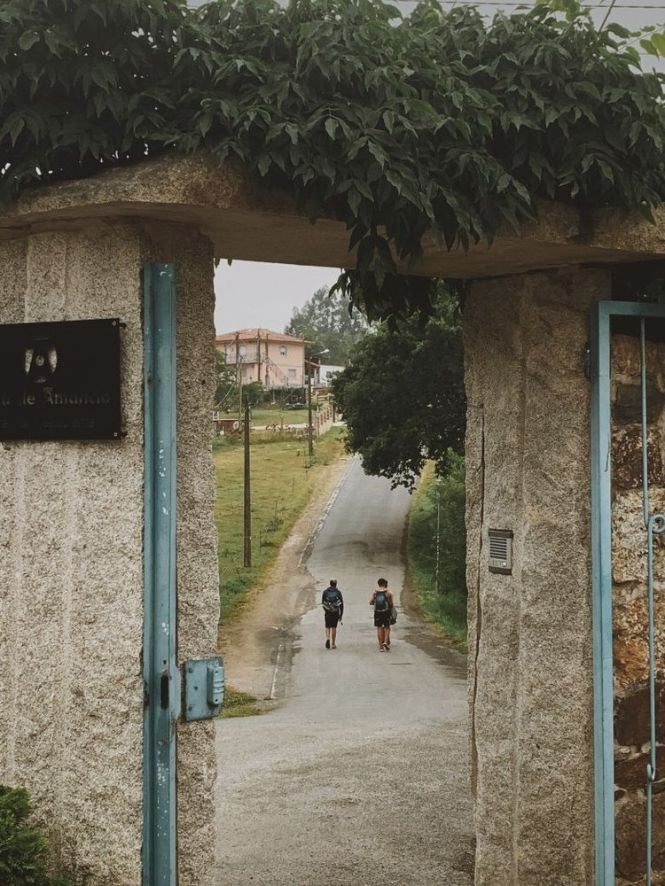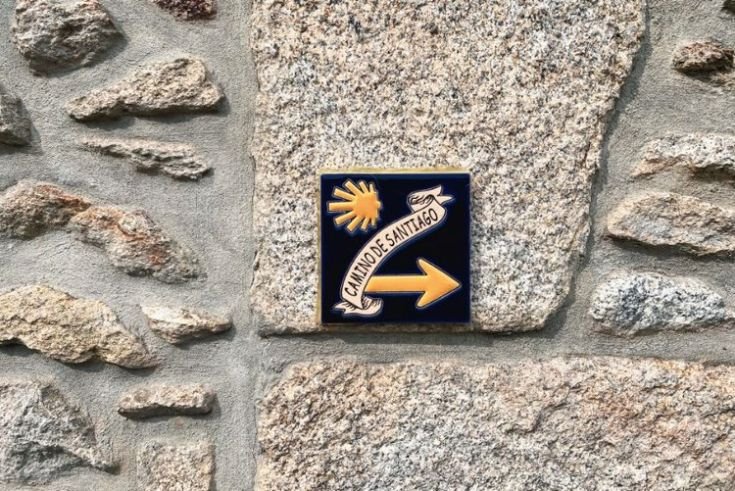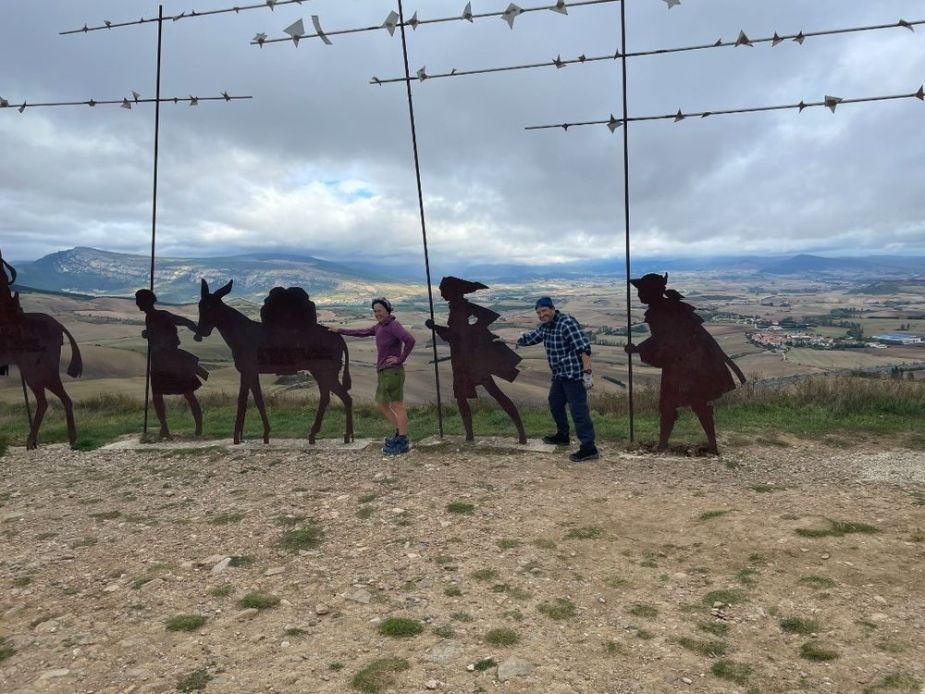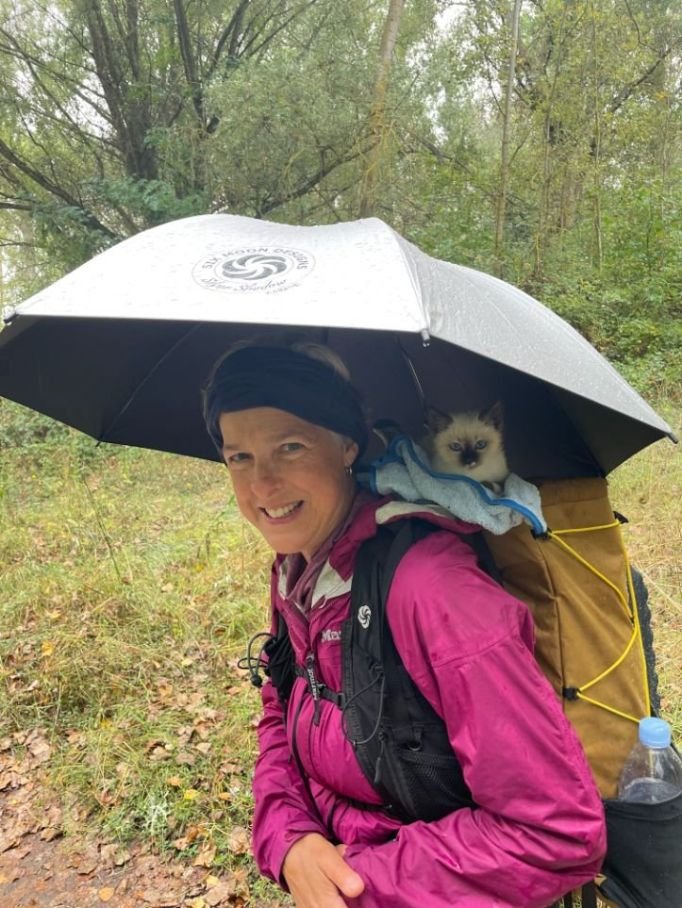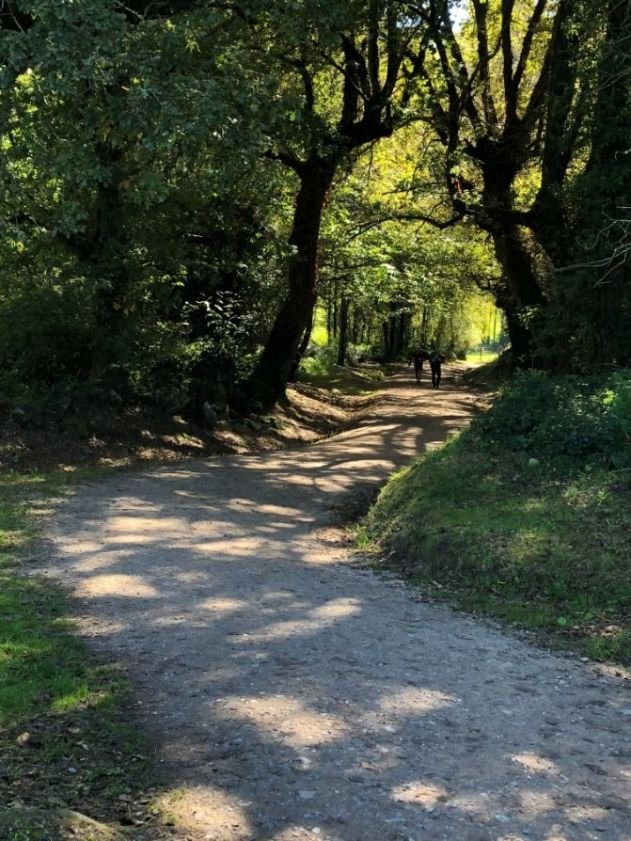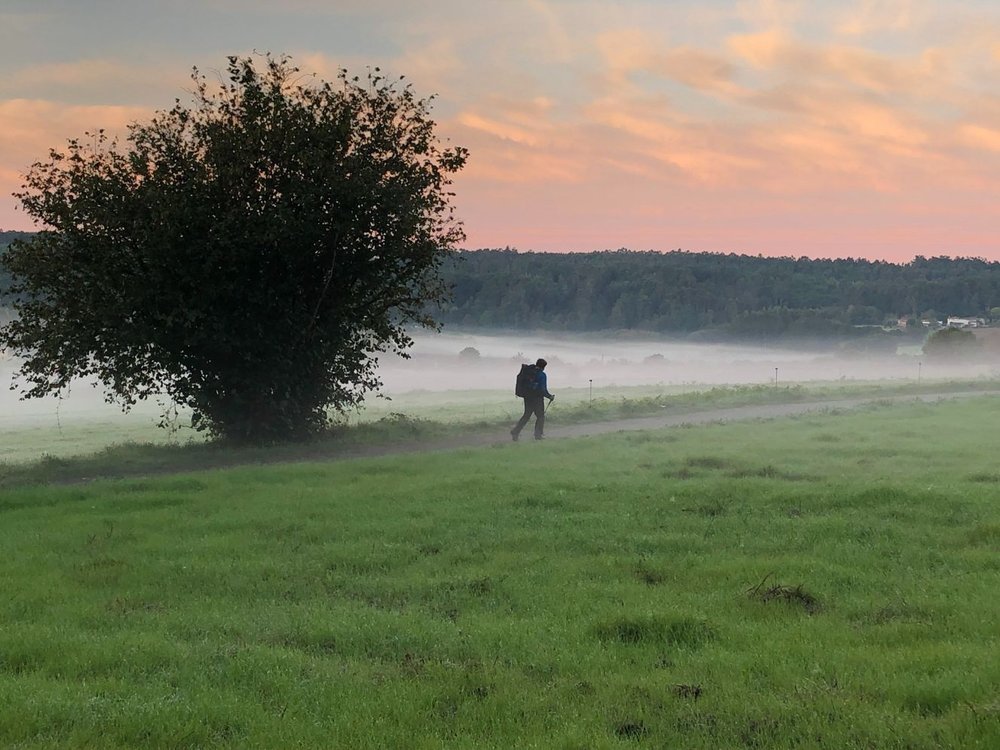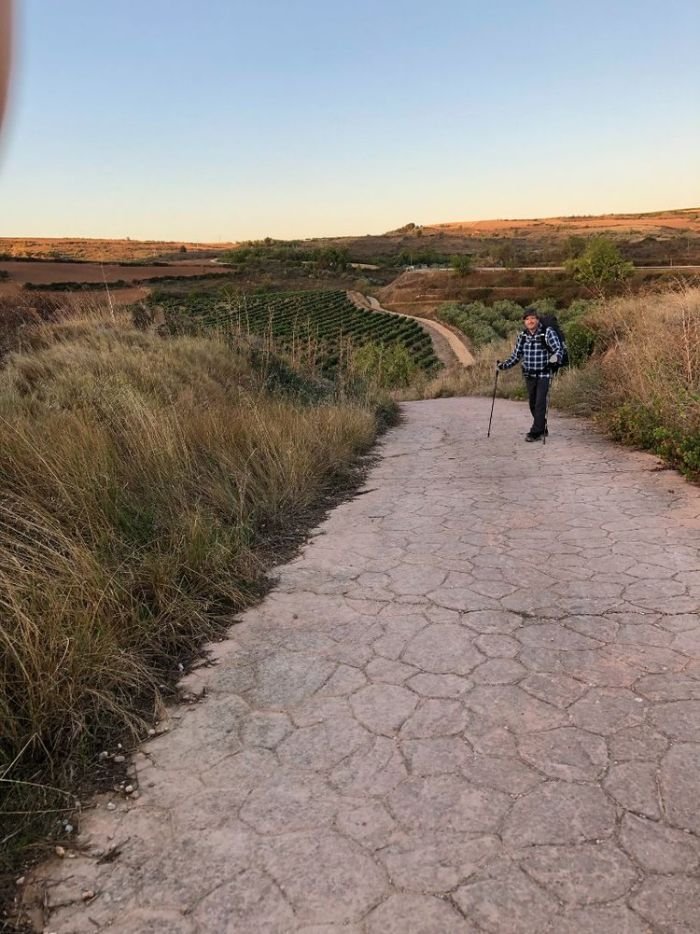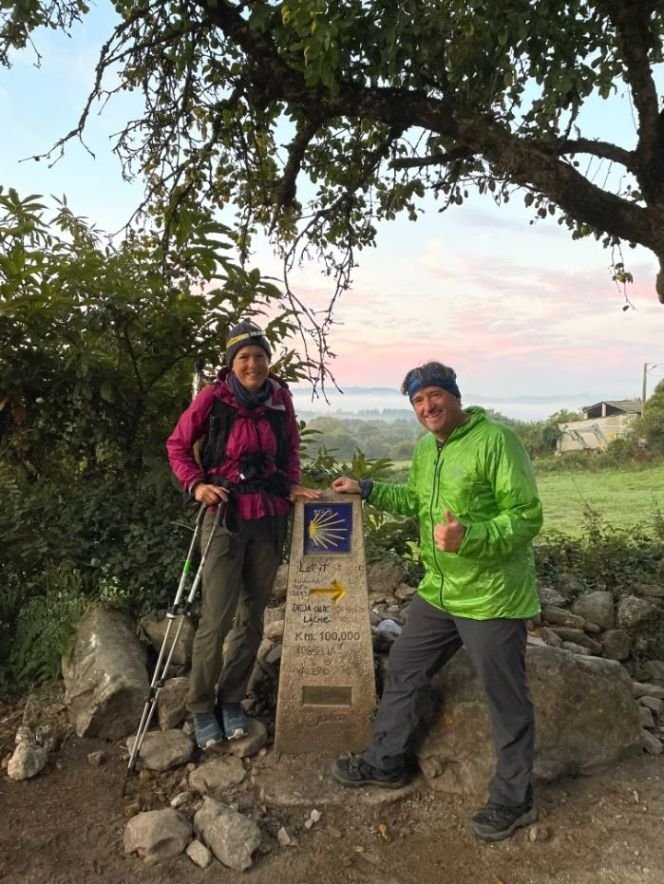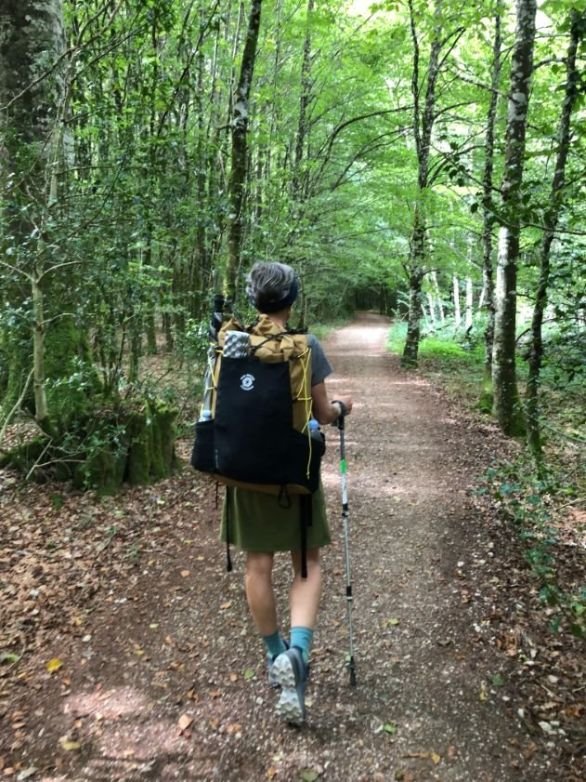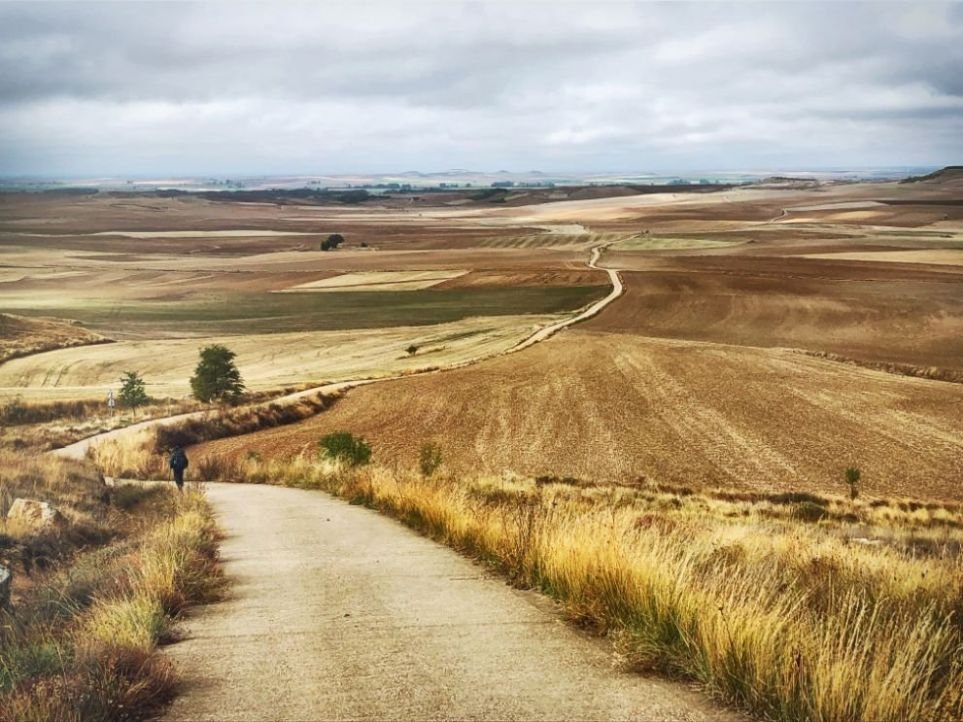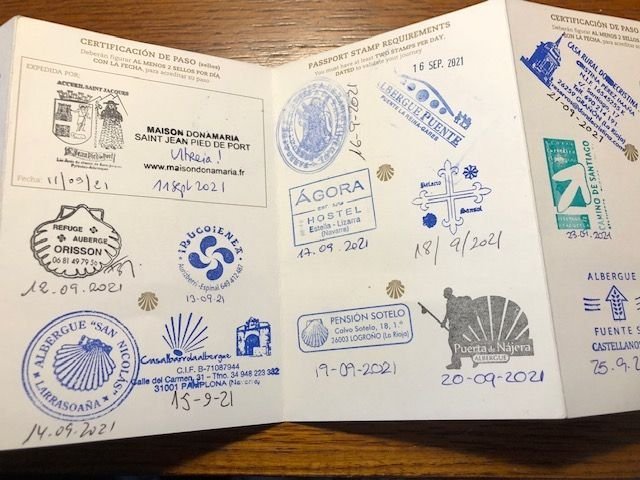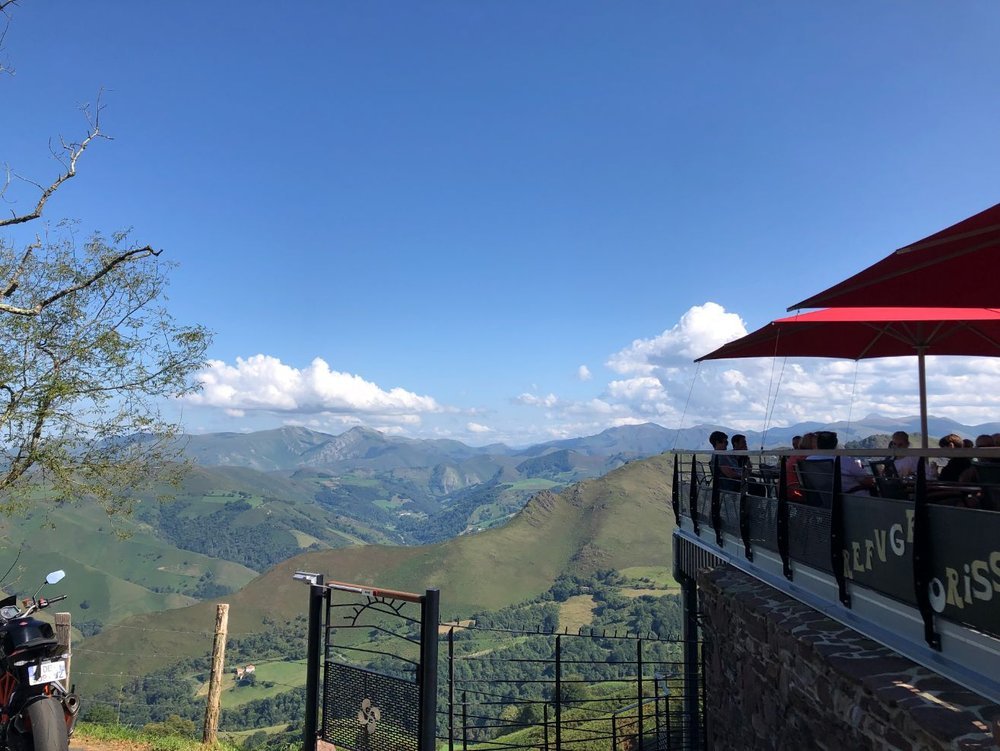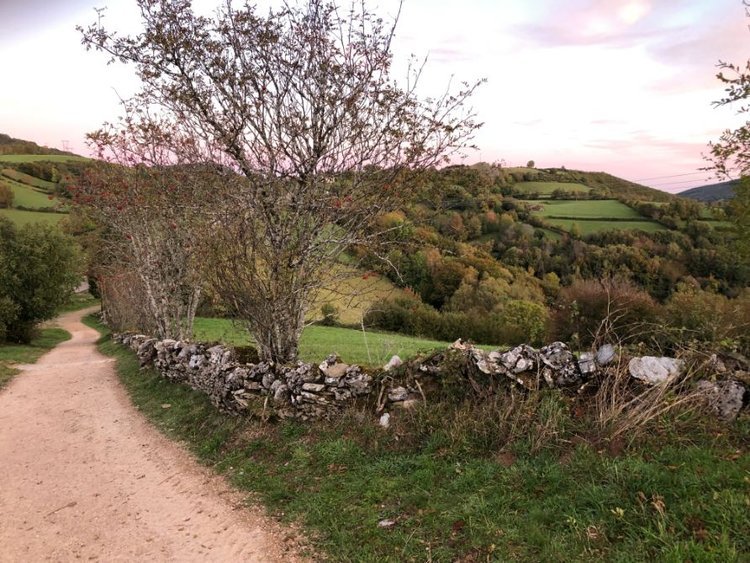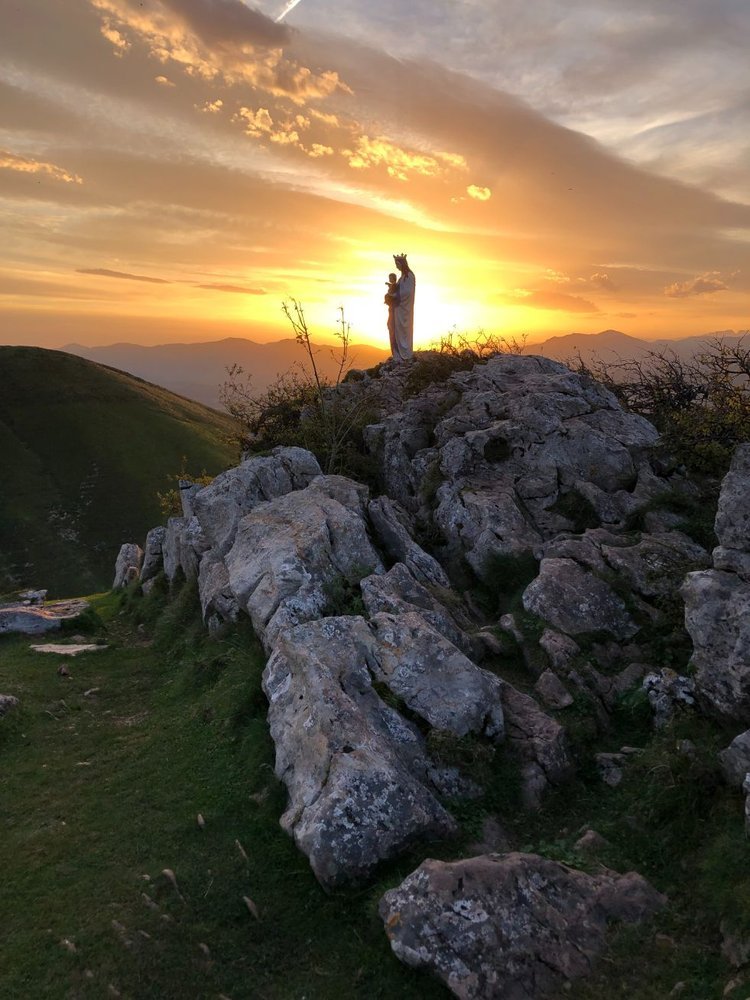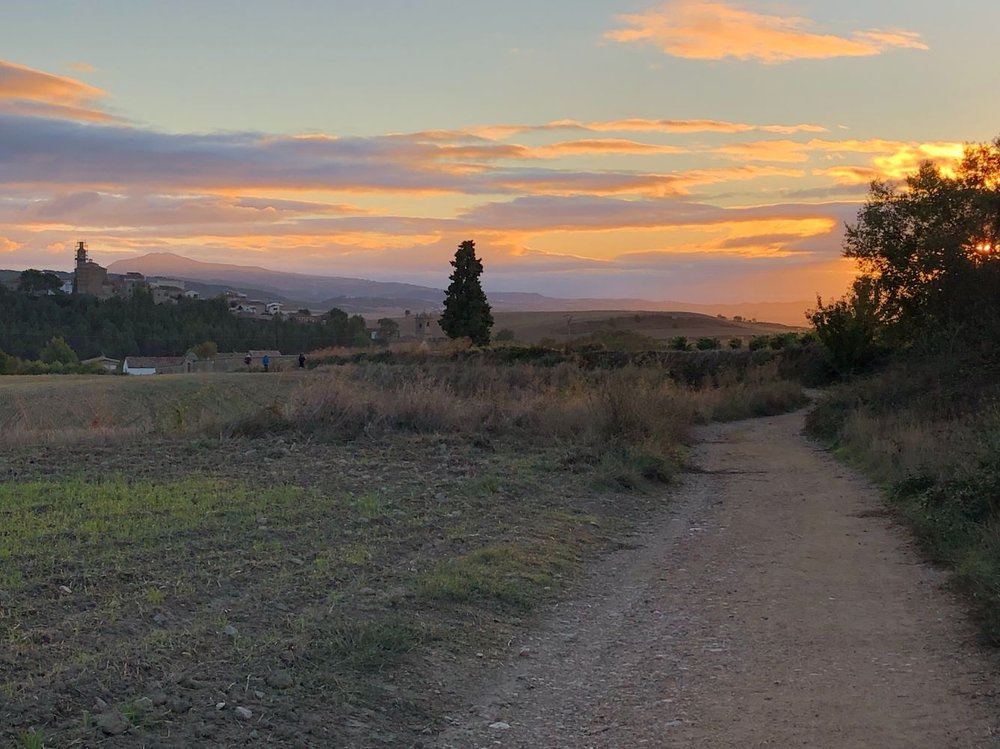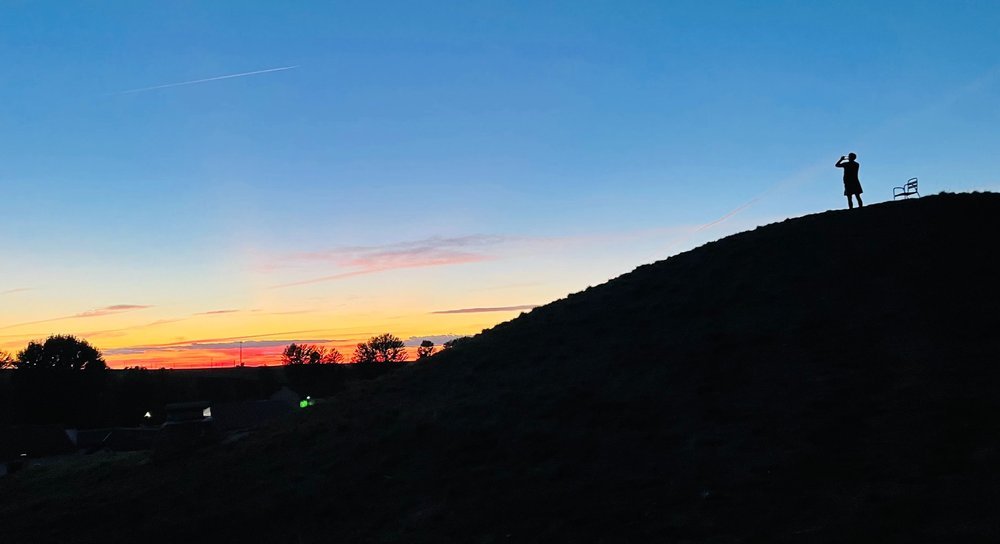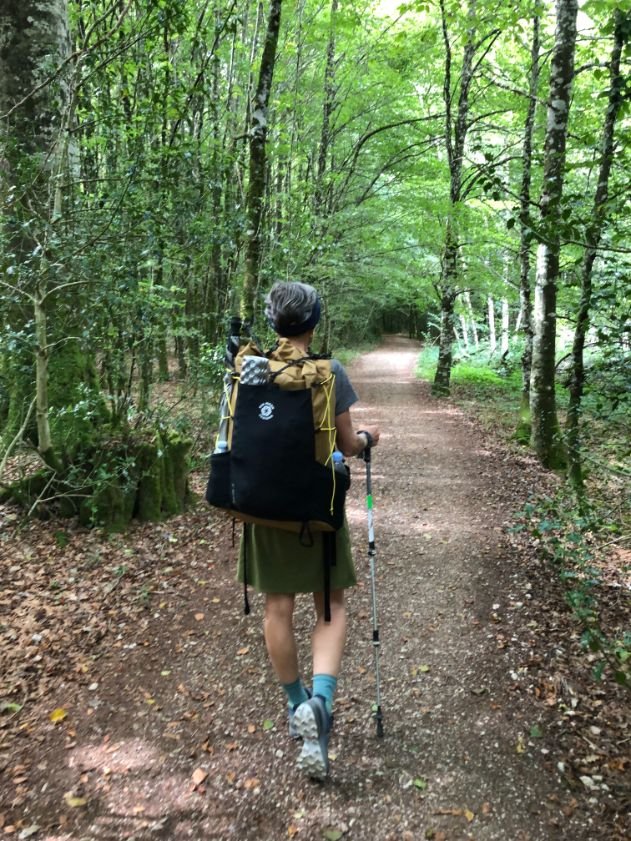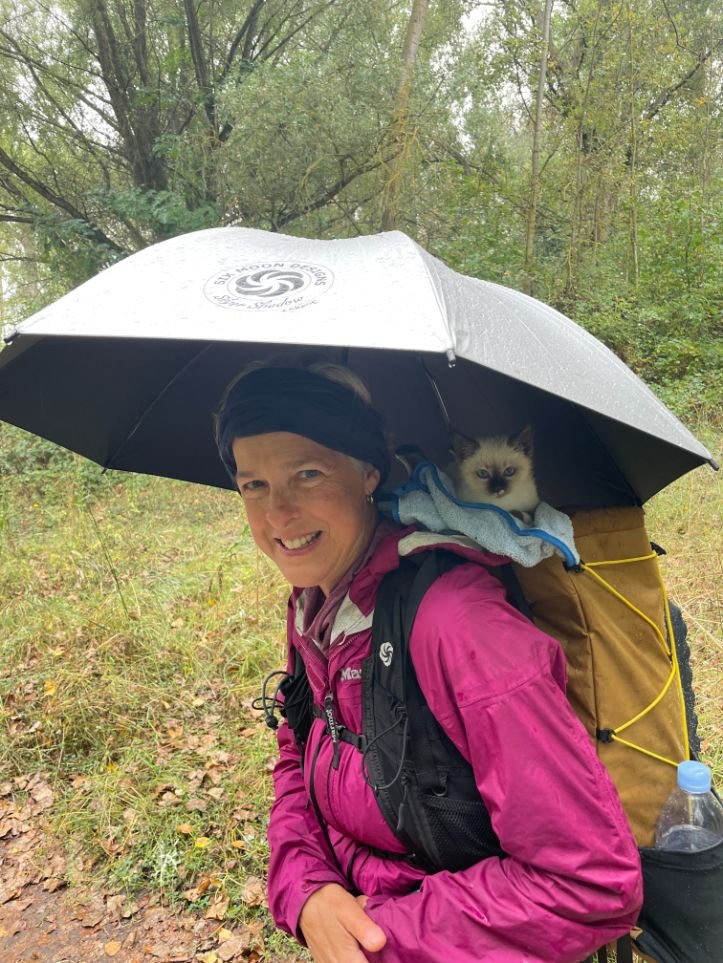Camino de Santiago Francés Backpacking Guide
How to Hike the St James Way from the French Pyrenees to Santiago de Compostela, Spain, on the Camino France
August 14th, 2024, updated to include a gear list table of what we carried and changes in guidebooks
Home > Trip Reports > Thru Hikes
The Camino de Santiago Francés (the Way of St James) is the most popular and famous pilgrimage route to Santiago de Compostela, Spain. The Camino France is a long-distance trek that offers beauty, history, solitude, and camaraderie with people from all over the world. The French Way is accessible for various fitness levels and ages, making it a wonderful and transformative experience for all kinds of walkers.
Distance: 790 kilometers (500 miles)
Days: Allow at least 33 days, but 35-40 days may give you a richer experience
Elevation gain/loss:
Elevation Gain: 18,666 meters (61,240 feet)
Elevation Loss: 17,778 meters (58,328 feet)
Best season: Spring or Fall
Permits: None required in advance, but you will need to get a free (donations accepted) Credencial Del Peregrino (like a passport) at the Pilgrim Office in St. Jean Pied de Port before departing for your walk.
Difficulty: This is up to you. Walking 500 miles can be hard on the body, and some days are more difficult than others. You can walk this path slowly, take more rest days, or arrange for pack transports to make it less challenging.
We create reader-supported, objective, independently-selected gear reviews. This story may contain affiliate links, which help fund our website. When you click on the links to purchase gear, we may get a commission — without costing you an extra cent. Thank you for supporting our work and mission of outdoor coverage for every body! Learn more.
What is a Camino?
The Spanish word El Camino translates to way. It is a spiritual journey of significant length that has its roots in paths walked by pilgrims over 1,000 years ago. These pilgrims often walked a Camino as penance for a crime or as a way to connect with God. That is why it is also called the Way of St James.
Today’s pilgrims walk the Camino de Santiago for many, many reasons. Some travelers are religious, but others are there to work through a life event or tragedy, or even just out of curiosity.
You will meet all kinds of people on the Camino Francés-from multiple countries, multiple ages, and varying physical abilities.
Modern Caminos offer a well-managed system of albergues. An Albergue is a pilgrim hostel, only available to Camino walkers. There are plenty of cafes and bars to offer food and drink along the way.
The Pyrenees as viewed from the Camino Francés. For many walkers, the start of the Camino is a challenge as it requires hiking up and over the Pyrenees.
What is the Camino Francés?
The Camino Francés (French Camino or the French Way) is the most popular of the many routes of the Camino de Santiago. It is a 500-mile walk starting from the Pyrenees border of France and Spain in the town of St. Jean Pied de Port, France. (See Variations for other Camino routes).
It crosses mid to northern Spain and ends at the Cathedral of Santiago de Compostela, Spain.
On the Camino Francés, there is a solid support system for walkers with physical challenges: services to transport your pack to your next destination; buses or taxis to take you to the next town should you become injured or need a rest.
The Camino Francés path is a variety of surfaces: paved, dirt, and gravel. Some days will be challenging (including the first day, which involves a significant climb up and over the Pyrenees mountains). Still, many days of walking are moderate--slowly ascending or descending paths with plenty of fantastic scenery to inspire you to keep going.
The Camino Francés is very well signed--it’s possible to do the entire walk without a navigation device as long as you pay attention.
By the end of this 500-mile (780-kilometer) walk, you will have traversed almost the entire country of Spain!
Highlights and Challenges
Highlights of the Camino
Easy to hike with minimal gear-you can sleep in a bed every night!
You may form lasting friendships with fellow walkers
The scenery is beautiful and constantly changing
Explore medieval towns and churches
Plentiful food and wine, often available at “pilgrim” prices
Challenges of the Camino
The first day involves hiking up and over the Pyrenees. It is a tough beginning for many people. Some people skip this part of the French Way, especially those starting early or late in the season.
Blisters-the variety of terrain makes blisters a common issue for Camino walkers
Crowds-depending on when you go, you may need to reserve your bunk a couple of nights in advance
Best Season for the Camino Francés
I hiked the Camino de Santiago in the fall, which was beautiful; there was a little rain, but not too much. There were a few hot days, but not too many. The sunrise in the morning was perfectly timed for beginning the day’s walk. Fewer people are on El Camino after the summer break.
How to Get Food and Water
One of the draws of walking the Camino de Santiago is that you don’t have to carry much food or water! Every few miles, you will hit a town or city where there are bars (think: restaurant, cafe, and bar all rolled into one) with an assortment of quick foods, such as the always present bocadillo (ham and cheese sandwich) or the tortilla de patata (Spanish omelet). Some bars will also fry you a couple of eggs and bacon for breakfast, but you may have to ask.
Those with dietary restrictions (such as the author, who is gluten- and dairy-free) will sometimes struggle to find non-repetitive options on the Camino Francés. Still, almost every bar offers tortilla de patata (a filling egg, onion, and potato casserole). There were a lot of chicken and fries dinners for me on the Camino Francés, but I never went hungry.
In addition, the “menu del dia” was an economical option for hungry walkers: two entrees, a dessert, and as much vino tinto (red wine) as you would like, for about $12-15. Finally, there was usually at least one small grocery store in each town, where walkers could pick up fresh fruit, chocolate, chips, tuna, bread, and other basic foods. With a bit of research, vegetarians and others on a restricted diet can hike the Camino de Santiago without going hungry.
What Skills Do I Need?
Navigation
The Camino de Santiago Francés is well signed. Still, you must always pay attention. It is sometimes easy to miss an arrow, especially as you pass through villages or when chatting with other fellow pilgrims. Some hikers complete all 500 miles using only the signage, just how the original pilgrims did! However, the FarOut app was beneficial when we had questions or explored some route alternatives.
Rough Terrain/ Scrambling/ Rock Climbing/ Technical Skills
None needed. It is walking.
Elevation Gain/ Loss
There is elevation gain and loss on most days of walking on the Camino de Santiago. However, only a few days are particularly challenging (hiking up and over the Pyrenees and O'Cebreiro, for example).
Walkers passport credentials from the Camino Pilgrim Office with stamps from Alburgues along the Camino Frances.
Permits
Most walkers show up at the first town of entry (St Jean Pied de Port if you are walking the entire 500 miles) and go to the Camino Pilgrim Office to get a blank credential. You will then present this credential to the proprietors of the Alburgues for a dated stamp, which proves you are a pilgrim. There are no limits set on the number of fellow pilgrims who can walk the Camino de Santiago at any given time.
Route Summary
Many guidebooks break the Camino pilgrimage into stages, with each stage being the equivalent of a day's walk. The average number of stages is 33, and each stage will be anywhere from a 12-20 mile walk. However, these are just suggestions.
There are so many small towns along the Camino that you could walk as little as five miles most days if you chose. Alternatively, you could walk 30 mile days and shorten your time on the Camino. Many hikers plan their routes to spend a night in larger cities: St Jean Pied de Port, Pamplona, Burgos, Leon, Ponferrada, and Santiago de Compostela.
Maps and Guidebooks
Camino Guidebook
A Pilgrim's Guide to the Camino de Santiago: Camino Francés - St. Jean • Roncesvalles • Santiago (Camino Guides) by John Brierley.
This Camino guidebook is considered the bible for the Camino Francés route. The author has walked the Camino many times and provides excellent details: maps, elevation gain/loss, lodging options, dining options, water locations, etc. Most notably, it has a village guide including the Albergue. Brierley’s book was the only guidebook we used, and it was always sufficient.
Apps
FarOut Guides: Great phone app for route planning and wayfinding
Camino Ninja: Great for finding lodging
Gronze: Good all-around travel app for Europe, especially the Camino routes
Booking: Useful for reserving beds in some Alburgues/pensions
Trainline: Good for booking trains in Europe
Getting To The Trailhead
Flying into Madrid Adolfo Suárez Madrid–Barajas Airport (MAD) or one of the two airports in Paris from the USA is perhaps the most economical travel choice. You can take a bus or train to St. Jean Pied de Port from either of those cities, where the Camino Francés begins.
Trailheads
The traditional start of the Camino Francés route is the town of St. Jean Pied de Port, France. Some prefer to walk only the last 100 kilometers, which traditionally starts in Sarria, Spain.
Going to the Bathroom on the Camino
Bars and cafes all have bathrooms available to Camino walkers who financially support their establishments. However, if the need hits you between towns, you are asked to pack out your toilet paper. Sadly, many pilgrims do not do this!
Water Planning
It is possible to hike the entire Camino with a refillable water bottle. There are water supply fountains in most villages, and they are well-marked in guidebooks or apps. Also, cafes and bars along the way are usually willing to fill your water bottle.
Camino Route Variations
There are many variations on the Camino route.
Many pilgrims end their Camino Francés trip by walking or bussing another 54 miles to Cape Finisterre. Here, they finish their Camino at the westernmost point of Spain (the “end of the world”). The route from Santiago de Compostela to Cape Finisterre is called the Camino Finisterre.
Another pilgrimage route for early season or late season hikers avoids walking through O Cebreiro to avoid lingering snows of O Cebreiro.
What are the Santiago Ways?
There are several variations on the Camino route, including (but not limited to):
Camino Portugues route: Also called the Portuguese Way, Portuguese Camino, or Camino Portuguese route, it begins in Lisbon or Porto.
Camino del Norte route (the Northern Way): It goes through Basque Country via San Sebastian
Camino Ingles (the English Way): It stays on the Iberian Peninsula as historically was popular with mostly English pilgrims who disembarked at the port in Ferrol or A Cornua
Camino Finisterre: The path that ends at Cape Finisterre
Camino Primitivo: An Original Way that splits from the Camino del Norte
The author hiking on the Camino Frances with her full backpacking kit.
Gear List
The gear you need for walking the Camino de Santiago is not quite like a traditional backpacking gear list like one would need for the Appalachian Trail.
| GEAR | PRODUCT |
|---|---|
| Tent | N/A |
| Backpack | Six Moon Designs Swift X Hiking Backpack |
| Pack liner | Six Moon Designs Pack Liner |
| Sleeping bag | Katabatic Gear Palisade 30F Quilt Sea to Summit Silk Blend Sleeping Bag Liner |
| Sleeping pad | N/A |
BACKPACK
I used the Six Moon Designs Swift X backpack with the shoulder harness. I loved the shoulder harness, which transferred all of the weight off my shoulders. My back never hurt during the entire 500 miles! It's the overall winner in our Best Backpacking Backpacks guide.
SLEEPING BAG
I used the Sea to Summit Silk Liner with a pillow insert. This sleeping bag would have been all I needed if I hiked in the summer, but since we left in mid-September, I also carried an ultralight down quilt (Katabatic Palisade 30 F) that was great for cooler nights. The Palisade is also the top pick in our Best Backpacking Quilts story. You can read our full, in-depth review of the Palisade here.
Note: The pillow insert version of this liner appears to only be available directly from Sea to Summit.
SLEEPING PAD
They are not required. There are mattress pads in each Albergue.
STOVE
Not required.
WATER PURIFIER
It is not required. Fresh potable water is available in the Albergue and at water fountains and cafes.
The author hiking the Camino Frances with a cat.
What to Wear
RAIN JACKET
I used a GORE-TEX Marmot jacket that is probably 20 years old. It still protected me from the rain! See our Best Lightweight Rain jackets guide for our recommendations.
RAIN PANTS
I loved the compact and light Montbell Versalite Pants. See our Best Rain Pants guide for more recommendations.
DOWN JACKET
The Montbell Superior Down Jacket was perfect for the cooler evenings and mornings—so comfortable and the right amount of warmth. The Superior is the similar, more affordable model of the Montbell Plasma Parka, which is the Best for Thru-Hiking winner in our Best Down Jackets guide.
PANTS
Outdoor Research Zendo Pants were a perfect weight for autumn walking. These were the Overall winner in our Best Women's Hiking Pants guide.
SHORTS
I loved the style and comfort of the Purple Rain Adventure Skirt. Although Treeline Review doesn't have a guide on hiking skirts, this is our favorite skirt in PCT Gear List, San Diego Trans County Trail Guide, Snowdonia Way Guide, and many other Where to Go guides.
SHOES OR BOOTS
Salomon Speed Cross (with added Superfeet footbeds) were very comfortable and had excellent traction. I had zero blisters! We reviewed the Speedcross in our Best Women’s Trail Runners guide and Best Men’s Trail Runners guide. Some people may prefer hiking shoes on this trip, which offer more support and cushion. See our Best Hiking Shoes guide for more recommendations.
MISCELLANEOUS GEAR
FIRST AID KIT
It’s important to include items for muscle pains and headaches. First aid for blisters is a must! Leukotape was a favorite blister remedy among hikers.
SUN PROTECTION
The Juniper Pro Performance sun hat protected my face when hiking on long sunny days. See our Best Sun Hats guide and Best Sun Shirts guide for more sun protection. See our guides to the Best Body Sunscreen and Best Face Sunscreen for more recommendations.
HEADLAMP
I used a Nitecore rechargeable headlamp. It is very lightweight and excellent for finding the trail during dark mornings. See our Best Headlamps guide where it is an upcoming winner.
FOOD STORAGE
My Sea to Summit dry bag doubled as a stuff sack and for washing laundry by hand.
HIKING POLES
I used Leki trekking poles about 15 years old. They’re lightweight, sturdy, and retractable. Please note that you must put them in a checked bag if you are flying with trekking poles! See our Best Trekking poles guide for more recommendations on poles.
Favorite Gear
Seat. My favorite and most comforting piece of gear was a Thermarest Z-Seat. It was so nice to use on cold mornings or at the end of a hard day of walking.
Travel towel. My Matador travel towel was essential, lightweight, and quick-drying. At some lodging, no towels are provided. See you guide to the Best Travel Towels, where the Matador travel towel is a winner for best for travel.
Unbrella. Many pilgrims use a hiking poncho, but I was the envy of the trail with my Six Moon Designs hiking umbrella! It also serves as sun protection and cat protector (see above photo).
My Buff. Doesn’t it go without saying? It’s so versatile for the hike! I loved the merino lightweight version. It worked well on both cold mornings and warm afternoons.
Pack liner. The Six Moon Designs pack liner was essential to have everything super dry after a day of walking in the rain.
Rawlogy Cork Massage Ball. It is so nice to be able to easily massage your feet at the end of every day. We specifically mention it in our Best Backpacking Accessories guide and Best Ultralight Luxury Gear guide.

